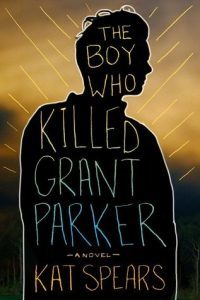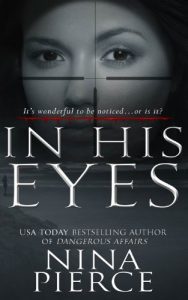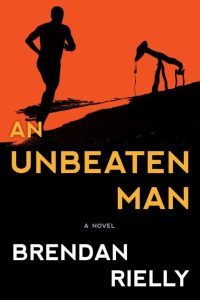Kathy Lynn Emerson's Blog, page 49
March 16, 2017
Get your YA YAs
John Clark talking about YA fiction. It’s no secret I love the genre and read extensively in it. There are days I discover so many interesting new books, I despair of ever reading them all. My appetite for it is fueled not only by new books from favorite authors, but through discoveries I make when I swap books on www.paperbackswap.com, browsing through the shelves at Bullmoose in Waterville and various websites. One of particular note is YA Books Central http://www.yabookscentral.com/. There I can enter to win books, but equally important, I get to read about ones about to be published that sound really interesting.
For example, if you look at the current giveaways there, you’ll see the following which I put on my get later list:
THE WAY IT HURTS by Patty Blount Release date: August 1, 2017 Publisher: Sourcebooks Fire ISBN: 9781492632788
Lost Girls Paperback –by Merrie Destefano January 3, 2017, Entangled Teen ISBN: 9781633756052
Who Killed Christopher Goodman?:Based on a True Crime by Allan Wolf, March 14, 2017, Candlewick Press. ISBN: 0763656135
Sasquatch, Love, and Other Imaginary Things Hardcover by Betsy Aldredge, Merit Press (August 8, 2017) ISBN: 9781507202807
Even the Darkest Stars Hardcover by Heather Fawcett, Balzer + Bray (September 5, 2017) ISBN: 9780062463388
Red Dirt Hardcover by Anna Jarzab, Harlequin Teen (August 29, 2017), ISBN: 9780373212514
The Breaking Light (Split City) by Heather Hansen, Skyscape (April 1, 2017), ISBN: 9781503942684
Here are two full reviews and two short ones I think some of you will like. Two are by the same author and feature the same protagonist. They stand out for two reasons. First, the main character is a strong female teen and in both books, she uses science to solve the crime in a way that makes it appealing and easily understandable, things I’d love to see more of in YA fiction geared for girls.
Short review #1: Daughter of The Pirate King, by Tricia Levenseller, Feiwell & Friends, 2017. ISBN: 9781250095961. Alosa is the daughter of the Pirate King. Raised to be tough and fearless, she’s captain of her own ship with a mostly female crew. When sent by her father to be captured by a rival cutthroat so she can search his ship for a piece of an ancient treasure map, she starts out fine, but soon becomes frustrated not only because the map fragment keeps eluding her nocturnal breakouts from the brig, but because she’s starting to wonder about how she feels toward the younger brother of her captor. Full of great dialogue, twists and turns, as well as a growing awareness that her life isn’t all she thought, it’s a dandy read and begs for a sequel.
In The BoyWho Killed Grant Parker by Kat Spears, you have a story that’s akin to being stuck on a hill with no way down while watching a runaway train headed for a collapsed bridge. You can only watch, cringe and hope for a miracle. After Luke Grayson got expelled from the private Washington, DC school, his fed up mom sends him to live with his Baptist minister father and evil stepmother in rural Tennessee. Coping with all the God stuff would be bad enough, but school is just as bad, particularly when he starts being stalked and bullied by football star Grant Parker. Grant can do no wrong in the eyes of townsfolk, but after a freak accident, Luke swaps places atop the social structure at school. How that happened, what goes on inside his mind, as well in reality, make this a very intriguing story.
Death Spiral: A Faith Flores science mystery by Janie Chodosh, The Poisoned Pencil; 1 edition (April 1, 2014) . ISBN: 9781929345007. Faith Flores has the deck of life stacked against her—Unknown father, addict (now dead) mom, fragmented education thanks to constantly moving, a distrust of most people and struggles with self-esteem and trust in general. One of the few things she had to hold onto was her belief that Mom was clean when she died, but when the death certificate states heroin overdose as the cause of death, her world takes a serious hit. Still, there was that scary rat-faced guy who threatened her mom just before she died.
Fast forward six weeks. Faith is now living with her Aunt T. It’s more stable, there’s real food in the house and her aunt isn’t an addict or unpredictable. Even so, Faith feels edgy and distrustful most of the time. Then things begin to happen that shake her world, leaving her wondering, a lot.
First, there’s Jesse, a new boy in her classes who is passionate, smart, a fount of trivia and not scared off by her hardness. The more he spends time with her, the harder it is for her to keep all her feelings and secrets from him. When she finds a note from her mom’s addict friend, Melinda, asking her to come talk to her (in the same decrepit, creepy neighborhood where Faith used to live), She’s torn, but after blurting an invitation to Jesse, which he accepts, they go to see Melinda, only to find her looking like Faith’s mother and hinting that the two women were involved in something mysterious at the methadone clinic that was treating them.
From there to the scary ending, readers are treated to several story lines that blend together. There’s Faith’s determination to find the truth, her agonizing ambivalence about trusting those who care about her and opening up, the very complex web of secrets surrounding what was happening at the clinic and why a bunch of researchers and doctors were involved, all culminating in a very gutsy act by Faith, Jesse, her friend Anj, along with Anj’s Scottish exchange student boyfriend, Duncan.
This is a dandy mystery with a gutsy and stronger than she realizes female protagonist. Teens (and adults) who like an intelligent mystery with strong teen characters will like it a lot.
Code Red: A Faith Flores science mystery by Janie Chodosh, Poisoned Pencil Press, 2017, ISBN: 9781929345281. Not long after Faith solves the mystery surrounding her mother’s death, she’s noticed for her science skills that were central to doing so. This results in her getting a pretty prestigious summer internship in New Mexico. While it means being away from her boyfriend Jesse, for six weeks, she’s really excited about getting a chance to bond with her inner science nerd. She’s also scared because she knows that Santa Fe is the last place her mysterious father was and that it’s likely he’s still there.
Her new batch of intrigue starts the day she arrives. Still using aloofness around strangers as a defense mechanism, she’s by herself, watching the other interns mingling when a tall and quite attractive guy starts talking to her. Enter Clem, who is not only local, but a violin prodigy, multiracial and knows the sting of an absent parent. He lives with his mother, a nurse, while his father lives in California and has a new family that always takes precedence when it comes to Dad time.
When Clem starts a conversation, two things are quickly apparent, he’s darn good looking and he’s not a jerk. In fact, the more they talk, the more Faith realizes that they’re kindred souls in numerous ways. Still gun shy following how she was perceived while living with her late mother, she has a difficult time sorting out what to tell him and what to hide. Her relationship with Jesse falls into the latter category.
Fortunately her internship sucks her in from the start. She’s working at a startup that’s trying to genetically modify chilies so they repel a pest that’s threatening to destroy the crops so many in the area rely upon for income. Not only does she catch on fast, but she gets her initial assignments done so quickly, she’s given more complex stuff to work on, like gene sequencing and comparison.
Then she learns what happened to her father, followed almost immediately by meeting a person who not only surprises the heck out of her, but changes her life in ways she couldn’t have imagined before coming to Santa Fe. That life change opens up not only new emotions, but huge new challenges.
At the same time, Faith starts wondering about what happened at a party where a girl died from an overdose of Liquid Gold, a hallucinogenic that used to come from the Amazon rainforests and be extremely expensive. It now seems plentiful and cheap. The more she digs, the more she starts wondering if the place where she’s interning has a hidden connection to bad things happening in New Mexico.
This second book builds on Death Spiral, but adds so much more. It continues to involve science in ways that readers will understand because it’s woven in so well and explained clearly. Not only does it allow Faith to grow both intellectually and emotionally, it presents her with several huge life challenges. While few teen girls will ever face as many as Faith does, lots will have to deal with being smart, liking science, figuring out screwed-up families or complicated/confusing attraction to the opposite sex. This book gives readers a look at all of these issues. In addition to being a dandy mystery, it’s a great look at the coming of age process and how family can be defined in many different ways.
March 14, 2017
Print vs E, Either-Or or And?
Susan Vaughan here. I posted this a few years ago, and am wondering if there’s still a debate.
I bought my Kindle several years ago because it was the only way I could read some authors’ books. But I was quickly hooked by the ease of reading on the device and the speed of purchase to download. Fortunately or unfortunately, depending on your viewpoint, impulse buying is costing me more. This doesn’t mean I’ve given up on print. There are certain favorite authors I absolutely must read in print, and I love browsing a physical bookstore. I read both forms, often different books on the same day. Most of my books are in both print and digital, and my newest series, The DARK Files, is so far only in e-book form.
Considering my habit, I wondered what others thought. Writers are voracious readers, so I posted my question about print versus e to a few writer groups. I had no idea I’d receive so many responses—over two dozen. I should’ve known.Most replied that they read both print and digital. Author Terry Shames (The Last Death of Jack Harbin) says, “For me, it isn’t versus; it’s plus.” She likes print and e-book for publishing and for reading. “I’m published in both ‘e’ and print. I’m happy that my readers have the choice.”
Nina Pierce (In His Eyes) adds that she likes the value of offering a full-sized novel at a reasonable price, but does like to offer her books in print “for readers who enjoy holding a signed copy in their hands.” Marnie Graff (The Green Remains) still wants a print book to hold. “There’s something about…the paper, turning those pages.” But she also reads e-books. “On a recent trip to England, I could carry a dozen books…and actually stow clothes in my suitcase.” Now here’s a summary of other responses.
WHAT READERS LIKE ABOUT E-BOOKS: –Normally cheaper to buy. –I can change the font size to suit me. –It’s easier to carry an arsenal of books, especially for vacations. –Access to reading wherever you go. –Books are easier to read when I’m eating. No having to use one hand to keep the book open! –An e-reader is great on the treadmill. I don’t have to hold a book open and can turn a page with a touch. –My keeper shelves are full, but my e-reader never fills up. –I read faster and buy more. –One-click purchase, immediate gratification. –If my novel has a “disturbing” cover, I don’t have to worry about fellow commuters seeing it.
WHAT READERS LIKE ABOUT PRINT BOOKS: –There’s something about the texture of a book that can never be replaced. –I love physical books especially for non-fiction. –I love holding the printed page in my hands, the smell of ink. –I’d rather browse a “real” bookstore than an online one, although I do both. –Highlighting passages on a Kindle is just not the same as on a print book. –When I read an excellent book on my e-reader, I purchase the print book to keep. –I love having signed copies from some favorite authors. –I get a certain pleasure out of having a “keeper” shelf that houses my absolute favorite fiction reads.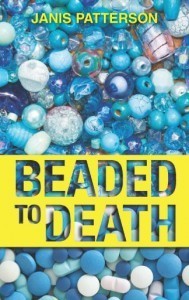
Janis Patterson (Beaded to Death) says, “You can’t compare them. It’s like planes and trains. Both will get you there (i.e., deliver the story) but the experience is different. It all depends on the circumstances.”
I’m glad to see that at least so far, it’s not an either-or issue. Many readers read both, as I do. Some publishers and retailers are going further by bundling print and e-books. They offer an e-book of a given title at a reduced price when a buyer purchases the print book. Author Thonie Hevron (By Force or Fear) sums up future possibilities. “One thing is for sure: publishing is on the move and changes are the new rule. I don’t think there is any final outcome to the industry. It will keep evolving, morphing into whatever the reader finds most suitable at the time.” Evolving is right. Today e-books can be enjoyed on almost any digital device.
I’d love comments here on print versus e-books.
March 13, 2017
Did Someone Say Picaresque?
 Kaitlyn Dunnett/Kathy Lynn Emerson here, today writing as Kathy.
Kaitlyn Dunnett/Kathy Lynn Emerson here, today writing as Kathy.
Recently I filled out an “Author Marketing Questionnaire” for Murder in a Cornish Alehouse, the third Mistress Jaffrey Mystery, which will be available in hardcover and e-book formats in the U.S. on April first. After filling in my name and book title and listing the URLs for my webpage, Facebook page (under Kaitlyn Dunnett), and blog (this one, of course) and informing my publisher, Severn House, that I don’t tweet, I was asked to come up with six or seven “keywords” to describe my novel. Since my mind sometimes works in mysterious ways, the first word I came up with was picaresque.
Okay, I see some of you scratching your heads. The picaresque novel isn’t a form that’s much studied these days. And, to tell you the truth, my novels don’t completely fit the definition. And yet . . .
My old grad school standby, A Handbook to Literature, defines the picaresque novel as “a chronicle . . . presenting the life story of a rascal of low degree engaged in menial tasks and making his living more through his wits than his industry. Episodic in nature,” it presents “a series of thrilling incidents impossible to conceive as happening in one life.” Plot and character development take second place to having adventures. The protagonist (the picaro) is likely to defy society’s conventions and morals, but will survive one episode and move on to the next without harm. Satire is a key element. So is realism when it comes to details. Now, having said all this, the Handbook’s most recent example of the form in English is a novel written in the sixteenth century.
 Forms of fiction evolve. More recent definitions of the picaresque novel cite Moll Flanders, Tom Jones, Don Quixote, and even The Adventures of Huckleberry Finn as examples. I’ll go a step further and include the protagonists of many mystery caper series—Donald Westlake’s Dortmunder and Janet Evanovich’s Stephanie Plum spring to mind—as picaros. Instead of all their adventures appearing in one volume, they are broken up into individual mystery novels and/or short stories.
Forms of fiction evolve. More recent definitions of the picaresque novel cite Moll Flanders, Tom Jones, Don Quixote, and even The Adventures of Huckleberry Finn as examples. I’ll go a step further and include the protagonists of many mystery caper series—Donald Westlake’s Dortmunder and Janet Evanovich’s Stephanie Plum spring to mind—as picaros. Instead of all their adventures appearing in one volume, they are broken up into individual mystery novels and/or short stories.
I’m not claiming to write capers, but I do use some elements of the picaresque novel in my historical mysteries and I think I always have. For one thing, the characters I choose to use as heroine and sleuth tend to be the odd ducks. They may not be lower class with flexible morals but they certainly don’t fit into the mainstream definition of how a woman should think and act. This tendency goes all the way back to Winter Tapestry, published in 1991. I originally wrote it as a historical mystery. It didn’t sell, but the brilliant and insightful Carolyn Marino, who had just taken a job as an editor at Harper Paperbacks for their launch of the new Monogram line, remembered reading it as an editorial assistant at another house and asked me if I would be willing to rewrite it as historical romance. Of course I said yes.
 It will surprise no one who has read my books that what we ended up with was a hybrid. It didn’t fit neatly into either mystery or romance and “historical romantic suspense” wasn’t a label anyone wanted to use on the spine of the book. In the end, Winter Tapestry was billed as “A romantic adventure in Tudor England.” That label may not have generated many sales, but it was accurate, and my first picaresque novel was born.
It will surprise no one who has read my books that what we ended up with was a hybrid. It didn’t fit neatly into either mystery or romance and “historical romantic suspense” wasn’t a label anyone wanted to use on the spine of the book. In the end, Winter Tapestry was billed as “A romantic adventure in Tudor England.” That label may not have generated many sales, but it was accurate, and my first picaresque novel was born.
So how does Mistress Jaffrey qualify as a picaresque protagonist? She’s not lower class, but she is the illegitimate child of a rogue knight. She defies society’s conventions. She escapes relatively unscathed from each adventure. I’d like to think that I have more plot and character development than is required by a picaresque novel, and I know I have the realistic details down cold. Satire? There’s some of that too, although it isn’t always deliberate. Simply by being herself, Rosamond Jaffrey points up the absurdity of what some of the other characters are doing.
I’ll have to leave it up to my readers to decide if what I write can truly be described as picaresque. As for the other “keywords” I filled in on that questionnaire, I’m pretty confident they are accurate. After picaresque, I listed historical, mysterious, series, adventure, and sleuthing.

Kathy Lynn Emerson/Kaitlyn Dunnett is the author of over fifty books written under several names. She won the Agatha Award for best mystery nonfiction of 2008 for How to Write Killer Historical Mysteries and was an Agatha Award finalist in 2015 in the best mystery short story category for “The Blessing Witch.” Currently she writes the contemporary Liss MacCrimmon Mysteries (Kilt at the Highland Games) as Kaitlyn and the historical Mistress Jaffrey Mysteries (Murder in a Cornish Alehouse ~ UK in December 2016; US in April 2017) as Kathy. The latter series is a spin-off from her earlier “Face Down” series and is set in Elizabethan England. Her websites are www.KaitlynDunnett.com and www.KathyLynnEmerson.com
March 12, 2017
Beware the ughs of March
 Ah, March. March in Maine. What can we say?
Ah, March. March in Maine. What can we say?
It’s Maine’s worst month. No “arguably” about it. It just is.
Winter is not over. Sure, sure spring starts in March. But it really doesn’t, if you know what I mean.
First of all, we lose that hour. I’m still a little cranky from springing forward, and plan to be for weeks. I know the whole country (almost) does the same, but we live in the easternmost state, so we don’t gain as much light, and the mornings are dark and cold.
As I write this, we’re bracing for a mid-week storm that’s being touted as “possibly the worst of the winter.” Can we just get this over with?
I once worked with a young reporter from Seattle. Around this time of year he asked a colleague and I when it “was going to start getting warm. Soon, right?” We just looked at each other and laughed. It was in New Hampshire, but same difference, as we say in Maine.
His protests that “spring was coming” just made us laugh harder.
March.
It’s the month that, yeah we may write about it in our mysteries, but not the one readers remember no matter how hard we try to make it real. Because it’s just so… so… well, you know.
But you know what? Just the nature of March means it’s my obligation to say something nice about it. I couldn’t.
I went to the deck at my office to take a photo to show just how crummy March is and came back with this one.

Yeah, okay. That looks kind of nice. Really pretty actually. If someone from away saw it, they’d think I was full of crap.
So I went back into my photo libraries trying to find a photo I’d taken that shows, really, how awful March is.
Here’s the first one that came up. I think I took this at Owl’s Head in March 2011.

Dammit! That is NOT proving my point.
Here’s another try.

Okay. That doesn’t prove my point either, but it doesn’t really count because I took it while I was snowshoeing, which is always nice and scenic.
How about one just from me and my mom walking around our neighborhood last week?

Okay, that doesn’t count either, because they live in a nice neighborhood.
I know! I remember one from the first day of spring I took a couple years ago in Belgrade.

Yeah, I know. It’s pretty. Not horrible at all.
I give up. I can’t prove March is the worst month. In fact, those photos make it look pretty nice in a lot of ways.
You’ll just have to take my word for it.
Maureen Milliken is the author of the Bernie O’Dea mystery series. Follow her on Twitter at@mmilliken47 and like her Facebook page at Maureen Milliken mysteries. Sign up for email updates at maureenmilliken.com. She hosts the podcast Crime&Stuff with her sister Rebecca Milliken.
March 10, 2017
Weekend Update: March 11-12, 2017
 Next week at Maine Crime Writers, there will be posts by Maureen Milliken (Monday) Kaitlyn Dunnett/Kathy Lynn Emerson (Tuesday), Susan Vaughan (Wednesday), John Clark (Thursday) and Lea Wait (Friday).
Next week at Maine Crime Writers, there will be posts by Maureen Milliken (Monday) Kaitlyn Dunnett/Kathy Lynn Emerson (Tuesday), Susan Vaughan (Wednesday), John Clark (Thursday) and Lea Wait (Friday).
In the news department, here’s what’s happening with some of us who blog regularly at Maine Crime Writers:
An invitation to readers of this blog: Do you have news relating to Maine, Crime, or Writing? We’d love to hear from you. Just comment below to share.
And a reminder: If your library, school, or organization is looking for a speaker, we are often available to talk about the writing process, research, where we get our ideas, and other mysteries of the business. Contact Kate Flora
Community-wide reading
I’ll use this blog post to do a little hometown brag while remaining book-centric.
To promote literacy, the love of learning, and a sense of community, the Westbrook school system invites the entire community to read the same book together. A committee of librarians and community members pick the book. For those who cannot afford the book, funds are raised so copies of the book can be provided to school libraries and classrooms. Students and the entire community are invited to react and discuss the book. It’s a wonderful experience.
This spring, the Westbrook community can read together The Boy Who Harnessed the Wind, the true story of Willian Kamkwamba, a boy from Malawi who constructed a windmill from scraps in order to provide electricity for his community.
When a terrible drought struck William Kamkwamba’s tiny village in Malawi, his family lost all of the season’s crops, leaving them with nothing to eat and nothing to sell. William began to explore science books in his village library, looking for a solution. There, he came up with the idea that would change his family’s life forever: he could build a windmill. Made out of scrap metal and old bicycle parts, William’s windmill brought electricity to his home and helped his family pump the water they needed to farm the land.
The book is available in picture book, middle level readers, and full text for high school readers and adults. The Westbrook community will discuss the books themes of writing, dialogue, art, and science. You’re all free to join us!
To hear Willian Kamkwamba’s TED talk, click here.
To order Brendan’s book, click here.
March 8, 2017
What Keeps Me Reading a Long-Running Mystery Series?
Hi. Barb here. In book jail in paradise. It’s either a blessing or a curse. I can’t make up my mind.
At the end of the month, when I hand in the sixth Maine Clambake Mystery, Stowed Away, I’ll be writing a proposal for my publisher pitching the next three books in the series.
Anticipating that task has caused me to think about what keeps me reading a long series of mysteries. It’s something I haven’t been analytical about in the past. I either keep buying and reading a series, or I drift away.
I’m not talking about what attracts me to a series in the first place, though that would, perhaps, be a good post for another day. Or why I’m attracted to series mysteries generally. I’m talking about what keeps me buying new books intentionally, often the day or month they’re released.
After pondering, here’s what I’ve come up with.
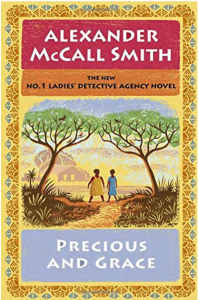 (1) The series has a strong moral center. Across crime fiction’s sub-genres, most main characters have a belief in, and a quest for, their personal definition of justice. But I find I am drawn to series where many characters live their own morality. Not in a preachy way. Nothing turns me off faster. But in a way that is tolerant, kind, and most of all, generous toward their fellow humans.
(1) The series has a strong moral center. Across crime fiction’s sub-genres, most main characters have a belief in, and a quest for, their personal definition of justice. But I find I am drawn to series where many characters live their own morality. Not in a preachy way. Nothing turns me off faster. But in a way that is tolerant, kind, and most of all, generous toward their fellow humans.
Louise Penny’s Armand Gamache comes to mind, as well Alexander McCall Smith’s Mma. Ramotswe. Both are towers of quiet moral strength. But in these series, and others I love, all the regular characters have their own strong moral sense, even if it is in some way opposed to the main character’s. When they are tested, sometimes these characters rise to the occasion, other times they betray themselves, but they always demonstrate their own truths.
It takes time, I find, and several books, for characters to demonstrate their baseline, not circumstantial, morality. This is one thing that keeps me coming back.
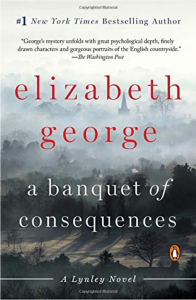 (2) The story opens outward. At the New England Crime Bake in 2015, interviewer Julie Hennrikus asked Elizabeth George about her most famous plot twist. Elizabeth said something like, “Always resolve story questions in ways that open the story up, not shut it down.” That seems like a good lesson.
(2) The story opens outward. At the New England Crime Bake in 2015, interviewer Julie Hennrikus asked Elizabeth George about her most famous plot twist. Elizabeth said something like, “Always resolve story questions in ways that open the story up, not shut it down.” That seems like a good lesson.
The first part of what she said is important to me. Somewhere, over the course of a series, I need the main character to chose the good guy or the bad boy, to make peace with her mother or decide she never will. I need that thing that happened in the past to be revealed, if not resolved. I’m patient about it. String me along for several books if you think you can, but it has to happen.
And when it does, just as a single book does with smaller, internal story questions, the resolution should make me want to go on, not close the covers.
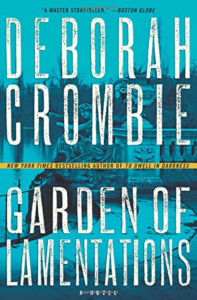 (3) I’ve grown attached not just to the main character, but to secondary characters as well. I had dinner with Deborah Crombie recently. Since she was on a book tour in support of her seventeenth Duncan Kincaid and Gemma James mystery, I asked her for advice about sustaining a series. She recommended elevating the role of a secondary character. For example, when she split up her main couple, a necessity because their personal attachment overtook their police jobs, she gave them each new partners. Reading the latest book, I realized I cared almost as much about what was going on with these new characters as I did about the main characters. As Gemma and Duncan’s personal stories have been resolved, and their back stories mined, new avenues have opened up via these new characters.
(3) I’ve grown attached not just to the main character, but to secondary characters as well. I had dinner with Deborah Crombie recently. Since she was on a book tour in support of her seventeenth Duncan Kincaid and Gemma James mystery, I asked her for advice about sustaining a series. She recommended elevating the role of a secondary character. For example, when she split up her main couple, a necessity because their personal attachment overtook their police jobs, she gave them each new partners. Reading the latest book, I realized I cared almost as much about what was going on with these new characters as I did about the main characters. As Gemma and Duncan’s personal stories have been resolved, and their back stories mined, new avenues have opened up via these new characters.
It’s one way of addressing Elizabeth George’s challenge above, though certainly not the only one.
 (4) The mystery still matters. I’ll devote an hour to a TV police procedural so screamingly obvious the killer is the biggest guest star. But I won’t devote the time it takes to read a book to a plot that moves from A to B to C. I’m a pretty passive reader of mysteries. I don’t try to outguess or outrun the author. But I require some complexity, something that makes me think. The best mysteries are the ones where the reader’s reaction at the resolution is, simultaneously, “I never saw it coming.” AND “Of course!” Not even my favorite series authors achieve that every time. But they achieve it frequently enough that I can’t wait to get the next book.
(4) The mystery still matters. I’ll devote an hour to a TV police procedural so screamingly obvious the killer is the biggest guest star. But I won’t devote the time it takes to read a book to a plot that moves from A to B to C. I’m a pretty passive reader of mysteries. I don’t try to outguess or outrun the author. But I require some complexity, something that makes me think. The best mysteries are the ones where the reader’s reaction at the resolution is, simultaneously, “I never saw it coming.” AND “Of course!” Not even my favorite series authors achieve that every time. But they achieve it frequently enough that I can’t wait to get the next book.
Readers, what keeps you coming back to a series? Try to stay on the positive things that draw you back, not the negative things that drive you away. Check out the Wicked Cozy Authors blog on Monday for that discussion.
Save
Save
Save
Save
Save
March 7, 2017
When do ideas come? Encouraging the Muse
ee Agatha Christie once famously wrote that she got her best ideas while washing the dishes. I’ve heard other authors swear by long walks or dreams.
Agatha Christie once famously wrote that she got her best ideas while washing the dishes. I’ve heard other authors swear by long walks or dreams.
Me? My muse is shy. She only appears when I’m alone, in a quiet place, doing and thinking about something other than writing.
The inspiration for my first mystery (Shadows at the Fair) came when I was alone, driving to Rhinebeck, New York, to set up my booth at an antiques show. I was 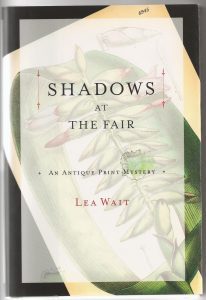 unpublished, working full-time, and hadn’t planned to write a mystery — in fact, I was working on several other projects at the time — but the seed of a mystery plot appeared, and I recognized it and ran with it.
unpublished, working full-time, and hadn’t planned to write a mystery — in fact, I was working on several other projects at the time — but the seed of a mystery plot appeared, and I recognized it and ran with it.
Since my thirteenth mystery (Tightening the Threads) will be published later this month, clearly that seed germinated.
I used to travel more — to antiques shows, to signings, to visit friends and family – and when I was driving alone I’d keep a tape recorder next to me, on the front passenger seat, so I could capture “random neuron firings,” as my husband refers to them, without stopping to pull out pen and paper. (Which, of course, I always carry with me — just in case.)
But I don’t have to drive anywhere to get ideas. Two of my other “go to” places” for 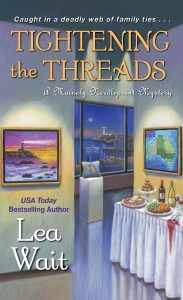 inspiration are very close at hand — my bathtub and my bed.
inspiration are very close at hand — my bathtub and my bed.
Maybe because baths are relaxing, I find taking a bath break when my characters are up against a wall and can’t figure out where to go can sometimes loosen thoughts that solve their problem. (A bit of fragrant water softener in the tub doesn’t hurt. I suspect it’s really the relaxation that does it.)
Which is also why I listed “bed” as a place to be inspired. (No comments from the peanut gallery!) I often read in bed at night — sometimes doing research for a next book, or devouring a mystery by an author whose work I admire. But, interestingly, those aren’t the books that head my mind in new directions. Maybe mysteries are too close to what I’m writing to lead me down different paths.
But literary fiction does.
When I’m immersed in books that evoke different places and feelings, sometimes a word or phrase will jump out at me and pull me down my own writing path. Capturing those moments is critical, because, like fireworks, they tend to flare and then disappear. Paper and pencil by my bedside are essential.
Sometimes, too, while in that drowsy-almost-sleeping-but-not-quite state, my mind will present me with a bit of dialogue, or backstory, or suggest a moment in my plot that I skipped, and that will deepen the characters or plot. I have to fight for those hints … I have to sit up and turn on the light and write them down immediately. I’ve learned the hard way that telling myself “I’ll remember that in the morning” doesn’t work.
I’ve heard authors talk about listening to quiet music, or swimming, or drinking wine, or even polishing silver as ways to encourage their muses. Those activities don’t work for me. And specific overall plots often require digging into research and memories … perhaps the subject of another blog!
And, I caution, inspiration does not come bidden. If I draw a bath and hope for insights and possibilities, I can almost guarantee that they won’t come. Fleeting thoughts only appear when I relax, and am focused on almost nothing. Muses can’t be summoned (although when I’m deep in the process of actual writing, they can be dragged, kicking and screaming, from the recesses of research and notes.)
Are there certain times and places that attract your muse?
March 6, 2017
Fiddling in the Spring
Had a wonderful time at the well-known local showcase for writers in Westbrook known as Books in the Brook last Saturday. Always a pleasure to talk to an audience that comprises more than my wife and the cat. Thanks to everyone who attended and please support all the local arts you can: what is most important right now is that we work, we love, we support each other, and in the words of my high school writing mentor: Illegitimi non carborundum. Google translate it or take instead the exhortation of my fierce Scottish grandfather: Stick in, people! Stick in!
Which is not where I intended to go at all today . .
I’m unusually busy this month after a couple months of torpor and sloth, so I’m going to cheat a bit and reprint a piece I did for a magazine a number of years ago. No crime is involved except unauthorized harvest, but the piece is certainly regional and seasonal.
. . .
The first few buds in the dwarf apple tree have finally come green. The forsythia and lilac are starting to flout their dance hall first-of-the-year color, and the two rivers with which I keep company are high and hypothermic with melt. It’s the time of year when fiddleheads show up.
It’s the time of year when fiddleheads show up.
This morning I took a walk around my horseshoe loop of road in southern Maine. Standing roadside in the mouth of a corrugated culvert stuck under the asphalt, was a meager bunch of fiddleheads, a little anemic, but green and growing nevertheless.
 Fiddleheads, if you’re so unfortunate as to be unacquainted, are the earliest springtime manifestation of several species of fern. At the first stage, the plant is a tight, circular scroll at the head of a long stalk, gauzed in a sandy husk that dissolves into angel hair as you strip it away. If you try to unfurl the head, you’ll end up with a handful of plump spadelike nodules that, sometime in the warmer days of June and early July, would have thinned and subdivided into the airy lace of the actual fern. The head is edible and doesn’t remain very long in its curled-up state. Once its curve begins to open, fiddlehead season is over.
Fiddleheads, if you’re so unfortunate as to be unacquainted, are the earliest springtime manifestation of several species of fern. At the first stage, the plant is a tight, circular scroll at the head of a long stalk, gauzed in a sandy husk that dissolves into angel hair as you strip it away. If you try to unfurl the head, you’ll end up with a handful of plump spadelike nodules that, sometime in the warmer days of June and early July, would have thinned and subdivided into the airy lace of the actual fern. The head is edible and doesn’t remain very long in its curled-up state. Once its curve begins to open, fiddlehead season is over.
As with my local specimens, fiddleheads don’t always look that appetizing in situ.  Their habitat is likely to be swampy, a slimy bog or a low spot where gray water runs off from a clutch of cottages. But anyone who’s ever eaten them, sautéed in a little butter or steamed with a side dish of crisp-fried trout, knows the balm they offer to the winter-weary soul.
Their habitat is likely to be swampy, a slimy bog or a low spot where gray water runs off from a clutch of cottages. But anyone who’s ever eaten them, sautéed in a little butter or steamed with a side dish of crisp-fried trout, knows the balm they offer to the winter-weary soul.
It’s true fiddleheads are the first fresh vegetable you can find after winter subsides, but their main attraction is that they have such a very short season. Fiddleheads, like most delicacies, are better prized and consumed in their season, then forgotten until their time returns.
Delicacy is a misleading term, though. This isn’t a vegetable that’s trendy, like those miniature turnips and carrots. In fact, it should tell you something that the international unit of measure for fiddleheads is the “mess.” They are a mess to harvest, since they live in the low and boggy places, and a mess to clean, with that gossamer husk that flies and settles in every corner of the kitchen.
One of the best gifts I’ve received was from a friend who came visiting one fine April day with fiddleheads freshly cut by her own soft hands and brand new Barlow knife. 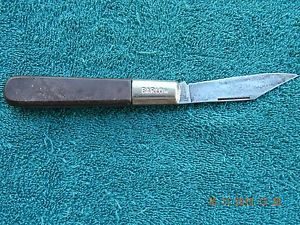 If ever I have given away fiddleheads, they were probably hacked off close to the ground and wrapped, all hairy and muddy and loose, in old newspapers. The ones she brought me were neatly chopped an inch below the curl, all cleaned and washed and shiny-packed in a plastic Ziploc bag.
If ever I have given away fiddleheads, they were probably hacked off close to the ground and wrapped, all hairy and muddy and loose, in old newspapers. The ones she brought me were neatly chopped an inch below the curl, all cleaned and washed and shiny-packed in a plastic Ziploc bag.  I could tell she was after something, and such is the power of spring and fiddleheads that she nearly wound up with it.
I could tell she was after something, and such is the power of spring and fiddleheads that she nearly wound up with it.
I could go on, especially about possibilities at the table – salt pork and fiddleheads, corn bread and fiddleheads – but I’m not trying to write a cookbook and I think you should discover them yourself anyway. What struck me as I walked around my road is this: there aren’t many things in this world that are sweeter in their immature state than when fully grown. There is love, mainly, and fiddleheads.
In a world so small that a Russian reactor belches and the rain in your town shows it, where federal officials tell us not to sweat a couple hundred extra picocuries in the milk, we need these fragile beginnings, the seasonal and annual recurrences, to keep us somewhere near honest. Somehow today, my own clock and calendar conspired to remind me that we don’t disrupt our cycles with impunity. I turned back along the horseshoe road, pulled out my knife, and cut myself a mess of fiddleheads. After the smallest of pauses, spring moved on.
March 5, 2017
Walking the Winter Beach
by Brenda Buchanan
Sunday afternoons lend themselves to rituals.
Leisurely drives to who knows where. Gathering around the table for dinner with family and friends. Kicking back with the Sunday papers, funnies and all, at least at my house, where we’ve never stopped immersing ourselves in newsprint. Joe Gale and his real-life counterparts (including three generations of Millikens) are our heroes.
Our central ritual is the Sunday afternoon beach walk, which happens year-round but is especially wonderful in the winter. There’s nothing like a bundled-up exploration of what the tide has wrought to re-charge a girl for the week ahead.
For readers of this blog who don’t live near enough to a Maine beach to walk regularly in the cold-weather months, here are some favorite photos to get you through until spring.

Some weeks the beach is drenched in sunshine.

And sometimes skies are gray.

More frequently than you might believe, the weather changes in the course of our walk.

Last Sunday the wind was howling at Pine Point Beach, transforming the waves into wild ponies.

Yesterday I found this lobster trap, marooned in the dunes.

Sometimes we’re entertained by intrepid surfers.

And sometimes we entertain ourselves.
No two weeks are the same, on the beach as in life.
It can’t say I’m ever bored when propelling myself through the wind along the wrack line. When I can’t sleep at night, I sometimes try to conjure the sound of the waves hitting the shore, especially the winter shore when stones tumble against each other at the verge, tapping in a rhythm that soothes my soul.
We typically stick close to home—Scarborough and Ferry beaches near Prout’s Neck, Pine Point when the wind and tide are right, Crescent Beach in Cape Elizabeth when we want to approach the shore from the woods.

Occasionally we wander up the coast to Popham or Reid State Park.
 Something always provides a nudge of inspiration for a story.
Something always provides a nudge of inspiration for a story.

Do you have Sunday rituals? Or favorite beaches?
Brenda Buchanan is the author of the Joe Gale Mystery Series, featuring a diehard Maine newspaper reporter who covers the crime and courts beat. Three books—QUICK PIVOT, COVER STORY and TRUTH BEAT—are available wherever ebooks are sold.


